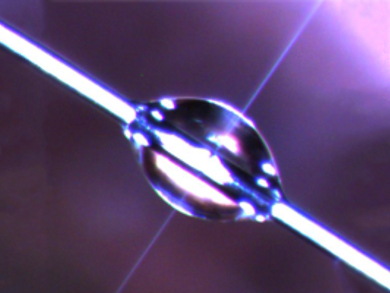Matthew Frenkel and Zhixiong Guo, Rutgers University, Piscataway, NJ, USA, have developed a polymer-based sensor with real-time monitoring of the temperature in cryogenic environments. Such cryogenic sensors could be used to determine the critical temperature of superconductivity in materials.
The sensor consists of a nichrome wire coated with polydimethylsiloxane beads. The temperature was measured by the change in resonance frequency of whispering-gallery light waves. As light waves travel around the spherical polymer beads, the resonance wavelength changes linearly with response to temperature. This is the first report of polydimethylsiloxane showing whispering-gallery waves.
The sensor could measure temperatures down to 95 K, which was the lowest temperature reached by the researchers’ cryogenic working environment. Temperatures as high as 140 K could be measured. The sensors were quite sensitive, determining temperatures to within 0.01 K.
- On-chip, dynamic, and cryogenic temperature monitoring via PDMS microshell coatings,
Matthew Frenkel, Zhixiong Guo,
J. Polym. Sci. Part B Polym. Phys. 2016.
DOI: 10.1002/polb.24016




